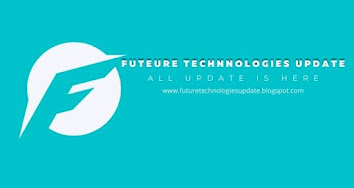Definition
of Open Innovation
 |
| Open Innovation |
What is open innovation?
Open innovation is to open up the
traditional closed innovation model of an enterprise and introduce external
innovation capabilities. Under open innovation, when companies expect to
develop technologies and products, they can and should borrow external research
capabilities as they use internal research capabilities, and can and should use
their channels and external channels to jointly expand market innovation.
The Significance of Enterprises Introducing Open
Innovation
(1) Reduce the R&D cost of the
enterprise, shorten the R&D cycle, and improve the competitiveness of the
enterprise
The widespread dissemination of technology
forms a powerful technology reservoir among competitors, consumers, suppliers,
universities, research institutes, industry organizations, and new enterprises.
Enterprises do not have to participate in innovation at the foundation stage
but can develop new technologies in the future. After it comes out, it can be
obtained from external purchase or acquisition of new enterprises, and then
fully tap the potential uses of innovative technologies or reconstruct the
value chain to achieve value breakthroughs, which can save the time and cost of
early research and development, shorten the cycle of product research and
development, and improve the efficiency of research and development. Efficiency
and enhance the competitiveness of enterprises.
(2) Reduce the risk of leakage of corporate
R&D results, increase corporate profits, and promote a virtuous cycle of
R&D
In open innovation, resources can flow
across borders to deal with excess or shortage of resources. When an idea or
R&D project is put on hold, it is not only faced with the temptation of
external choices but also faced with the depreciation pressure brought by
technological updates. Through open innovation, seeking buyers or partners and
converting ideas or technologies into economic income can not only reduce the
risk of technology leakage but also reduce R&D losses and bring benefits to
enterprises.
For example, Philips has set up a dedicated
intellectual property management team to formulate business plans for research
results that have the potential to gain economic benefits in the market, and to
find suitable partners to market the business plans in the market. In 2004, the
net profit of Philips Consumer Electronics was 249 million euros, and the net
income brought by the technology transfer fee was as much as 97 million euros.
(3) Accelerate the speed of innovation,
improve the success rate of innovation, quickly occupy the market, and improve
the influence of enterprises
After the era of the knowledge economy, the
speed of technological updates in many fields is measured in months, so the
speed of innovation is of overriding importance. A McKinsey study shows that
projects that go over the development budget but bring a new product to market
promptly reap more benefits than those that do not go over budget but delay the
time to market. If the new product is put on the market 6 months later, the
cumulative revenue within 5 years will be reduced by 17%-35%. However, if the
development spend exceeds the budget by 50% and the new product is brought to
market quickly, the benefit is only reduced by 4%.
Under the open innovation model,
enterprises make customers become cooperative producers, fully understand the
needs of customers and the market, clarify innovation goals, shorten the time
for the market to accept products, quickly occupy the market and improve
competitiveness. For example, Procter & Gamble emphasizes extending the
touch of innovation to the outside world and to consumer groups to obtain more
innovative ideas.
(4) Reduce the cost of innovation risk and
improve the success rate of innovation
The research, development, production, and
sales of open innovation are not concentrated in one enterprise, and different
innovation entities share the innovation risks of the enterprise and improve
the success rate. Since different institutions have different expertise in
basic research, product development, and marketization, they have expanded
their respective fields of practice through cooperation, maximizing the chance
of innovation success and reducing the risk of failure. It's a process of
gathering strengths.
 |
| Open Innovation |
Open innovation model
(1) From the outside in (regression)
Managing the conscious influx of knowledge:
searching for knowledge, purchasing knowledge products, researching courses at
universities, funding start-ups in your industry, working with intermediaries,
suppliers, customers, using non-disclosure agreements. Crowdsourcing etc.
 |
| Open Innovation |
The first is strategic cooperation. Large companies sign technology licensing contracts
with startups, and large companies use startups' technologies, patents, SDKs,
software, etc. in their products. This cooperation method has a lower degree of
capital coupling and is relatively more flexible.
The second is mergers and
acquisitions. This is
also an open innovation approach that American tech giants often take. Taking
Google as an example, the 100 companies acquired in 2014 involved mobile
applications and services, enterprise services, cloud computing, artificial
intelligence, and other directions.
The third is a strategic
investment. Large
companies obtain part of the shares of startups through equity investment,
forming an exclusive possession of the innovative achievements of startups. For
example, Xiaomi’s Xiaomi Ecological Chain has invested in headsets, bracelets,
power banks, and other companies, with Xiaomi accounting for 30% of the shares.
-40%, and sell these accessories in Xiaomi's channels.
The fourth is the incubator. For example, in Microsoft's Accelerator, SAP's
Startup Focus, Haier's Haichuanghui, etc., large companies set up incubators
for early-stage projects to incubate entrepreneurial projects of their internal
employees or external teams.
 |
| Open Innovation |
Typical cases of open innovation
Intel: Apply external resources
Intel's approach to open innovation is to
use external resources in the innovation process. Intel's R&D strategy
consists of four components: university research sponsorships, open
collaborative research labs around universities, in-company research projects,
and company acquisitions.
The graphic above depicts Intel's
exploratory research approach. The entire process begins with scanning the
environment and potential research areas. Intentional research projects are
initiated through sponsorship, laboratory research, internal research, or Intel
Capital, and a decision on whether to commercialize the product or technology
is not made until the results can be seen.
Intel has sponsored more than 500
universities and deployed its open collaborative laboratories around
universities in related fields. Such labs typically have 20 Intel researchers
and 20 researchers from universities. Although the lab is owned by Intel, the
research environment is fairly open, and some projects are public. Intel is
more focused on learning quickly from the larger environment, acquiring a
plethora of new ideas, and acquiring intellectual property. Of course, it also
has its internal research activities to obtain promising inventions. Intel
encourages labs to come up with valuable ideas from both Intel's internal and
individual business unit perspectives. Intel Corporation updates its research
and development strategic plan every two years to protect future development.
In addition, almost half of the researchers in the lab are students.
Intel has significantly increased R&D
investment in the past decade, and the number of patents issued every year has
increased. In 2005, the number of patents obtained by Intel worldwide was about
5,000. This shows that Intel's exploratory research strategy has been
successful.
Cisco: Mergers and acquisitions for integration
Cisco's innovation strategy is a
combination of internal development, strategic alliances, and acquisitions. In
innovative businesses, it is an active acquirer and investor. Since 1993, a
total of 108 companies have been acquired, and 30% of revenue has come from
acquisitions and development activities. Another important strategy is
cooperation. In the 1980s and 1990s, its acquisition and partnership strategy
were unique among high-tech industries, allowing it to acquire new technologies
and solutions more quickly.
After a company is large enough, if some
employees have good ideas, they will find that there is also a lot of
resistance in promoting it in the company. As a result, many employees tend to
go out to start a business once they have a good idea. For this kind of talent
loss and reuse, Cisco's approach is worth learning from many companies: if
someone in the company is willing to start a business, and the company thinks
what they are doing is a good thing, it will invest and support them to start a
business. Once these companies are successful, Cisco has the right to acquire
them first. If the small company fails to close down, Cisco has no additional
burden except for losing some venture capital.
Cisco acquisitions were made to gain access
to scarce intellectual assets, basic human resources. In Cisco, people often
meet colleagues who are "second entry" or "third entry". To
ensure a successful acquisition, Cisco identifies three goals that must be met
with each acquisition: employee retention, the continuation of new product
development, and return on investment.
For potential acquisition targets, Cisco
has specific screening criteria: nearly 25% of the acquisitions have little
initial investment, and the acquisition must provide both Cisco and the
acquired company with a win-win situation in the short and long term; the
acquired company must share a common vision and Convergence, and its location
is close to Cisco. Cisco uses scenario planning to decide whether to acquire
and how quickly.
In this way, almost all of Cisco's
production has been outsourced, and through internal venture capital to support
entrepreneurship and mergers and acquisitions, Cisco has monopolized the
technology of Internet routers and other important equipment.
Tesla: Alliance for Open Source and Enterprise Innovation
Tesla's success is classified by the
industry as the success of Internet thinking, and Musk's open patent move also
reflects the Internet's spirit of "freedom, equality, openness, and
sharing", but is he a living Lei Feng??
The purpose of Tesla's open-source all
patents is to allow more people or companies to stand on the shoulders of
giants at a lower threshold and invest in the development and popularization of
electric vehicles in the world. On the surface, the open patent is to allow
competitors to take advantage, but this move has invisibly improved the
universality of Tesla's technology, giving it a favorable position in the
future standard formulation. Therefore, the hidden effect behind this is that
if Tesla's patent open source reaches a certain scale and its technical allies
grow to a certain size, they will have to be compatible with Tesla's charging
standards. If Tesla establishes an industrial alliance supported by Tesla
technology, it is believed that the surplus capacity of the super battery
factory will be digested by Tesla's allies. At this time, Tesla is not only a
manufacturer of electric vehicles It is also the controller of upstream core
battery resources.
Musk appeared at the North American Auto
Show in Detroit. This time, Musk said that the real enemies Tesla's faces are
not necessarily traditional manufacturers and dealers, but users who are
accustomed to diesel locomotives and the huge industrial inertia rooted in
traditional business formats. To break these shackles, the alliance is the best
means.
Therefore, Tesla welcomes other automakers
to enter the electric vehicle industry. It wants to form a "matrix of
electric vehicles" instead of fighting alone. In this way, the overall
electric vehicle industry will have greater potential energy. Market
cultivation, policy breakthroughs, technology accumulation, and the formation
of the electric vehicle industry chain will form a group ecological effect and increase
the volume of electric vehicles.












No comments:
Post a Comment